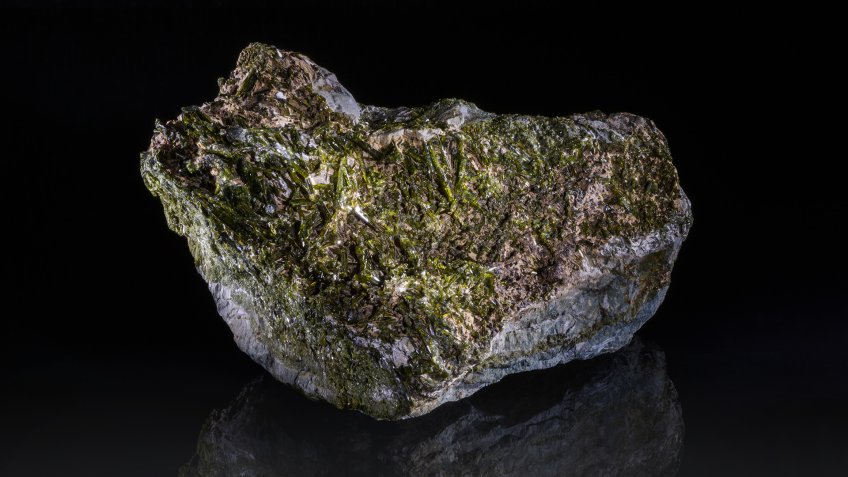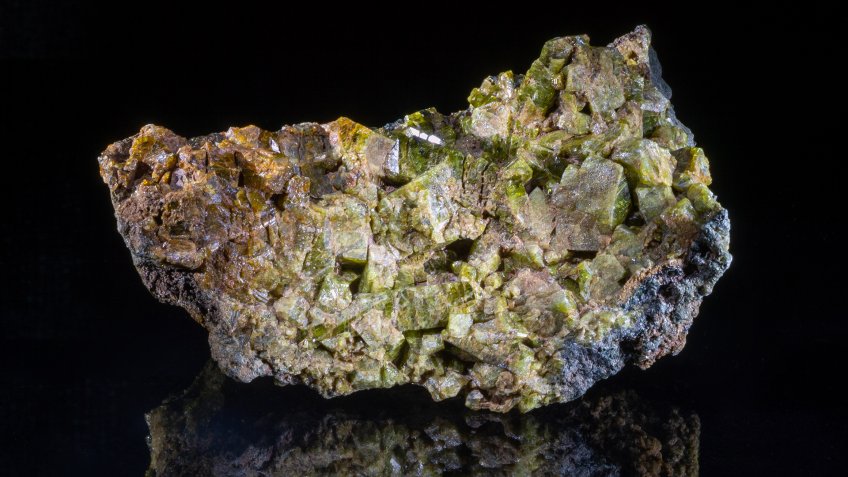
This previously unknown mineral was first discovered in the late 18th century by Abraham Werner, a German geologist from Freiberg, Saxony. He was studying lavas from Mount Vesuvius when he found several fine crystals of the mineral. Nowadays, the green-coloured mineral ranks as one of the most beautiful gemstones.
Since Saxony was at war with revolutionary France, alongside several other European monarchies, Werner had to pursue science in a rather hostile environment, living under constant threat. One notable example of how the situation could unfold is Archimedes, who died during the siege of Syracuse. A Roman soldier demanded he stop studying, but Archimedes did not obey, thus paying with his life for the desire to continue working amidst the city's fall.
The name 'vesuvianite' was given because the mineral was found within included blocks of lava at Vesuvius. When this volcano, located in the south of Italy, erupted in 79 CE, over 1,000 people died. The Roman cities of Pompeii, Herculaneum, Oplontis and Stabiae were destroyed entirely.
There was no doubt the find was a brand-new mineral. Werner, probably best known for his theory of chronological succession in rocks, could identify a mineral just by taking it into his hands and carefully examining it. During his life, he discovered eight new minerals. A teacher at Freiberg Academy of Mining, he popularised the university he had worked at for over 40 years more than anyone else. Students from Germany, Brazil, Norway, England, and even the US, gathered at his lectures. Abraham Werner's legacy is carefully preserved by one of the top German technical universities. It has been 12 years since the institution put the world's most extensive private collection of minerals on display. The exhibition is available to anyone interested at Freudenstein Castle.
In the past, vesuvianite was believed to have the same powers Vulcan, the god of fire, had. Ancient Romans, living amidst the widespread crisis the empire entered in the 3rd century, eventually changed their religious beliefs and endowed Vulcan with the power to postpone destiny for 10 years. Servius, a late fourth-century grammarian with the contemporary reputation of being the most learned man in Italy, wrote that people started seeing Vulcan as the 'father of humanity'. Another legend says that both the god and vesuvianite, the rock associated with him, could delay one's imminent death or any other unwelcome event.
Vesuvianite crystals are often cut as gemstones, with the larger ones often used as fake emeralds. A sky-bluish variety cyprine is the best known, mined in Norway and several other locations. Its name comes from the Latin word meaning 'Cypriot'; Cyprus used to be a major exporter of copper, and cyprine contains abundant copper.




